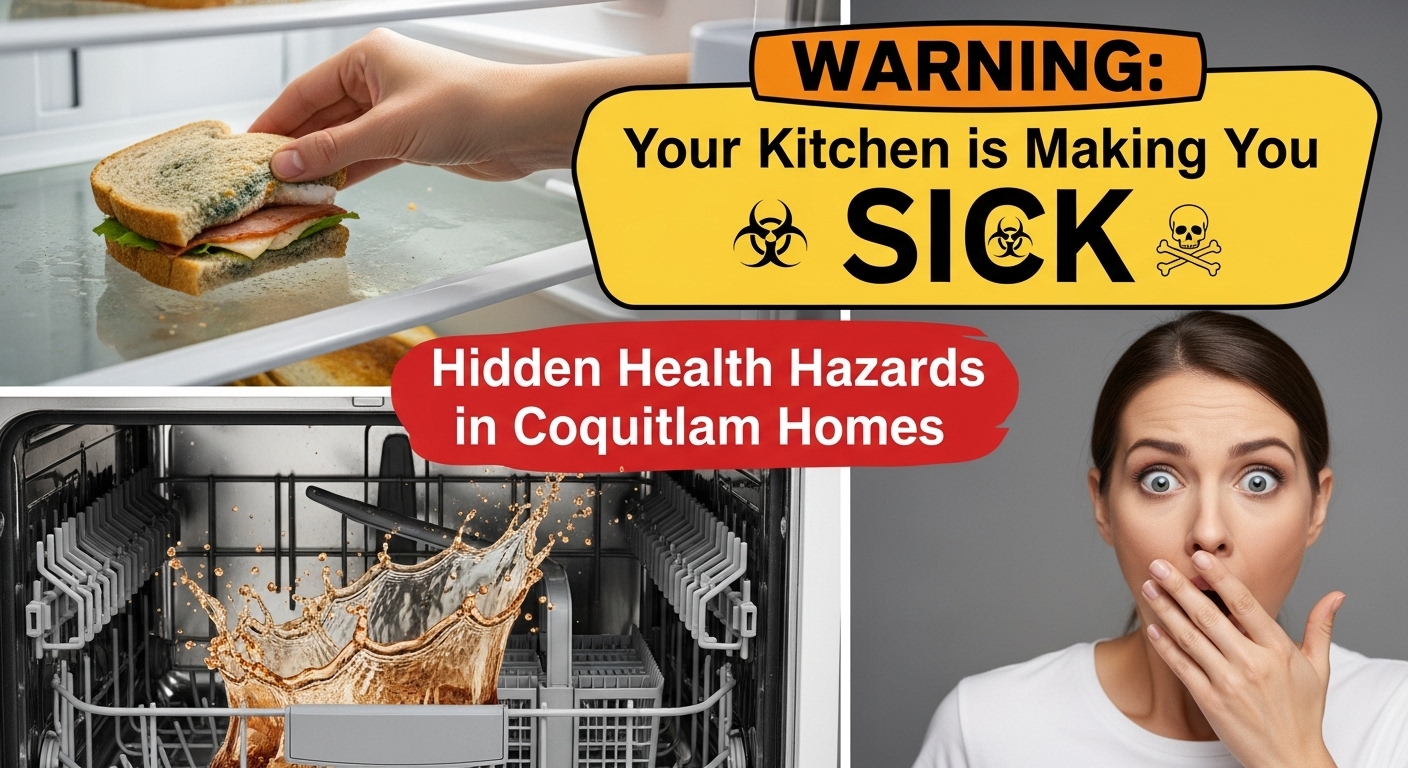
Worried about hidden health hazards lurking in your kitchen appliances right here in Coquitlam? Discover the shocking truth about how your refrigerator, dishwasher, and garbage disposal might be slowly making your family sick – and what you can do to protect them.
Picture this: you’ve just finished cleaning your Coquitlam kitchen from top to bottom, wiped down every surface, and feeling pretty good about your family’s health and safety. But here’s the plot twist that’ll make your stomach drop – the very appliances you rely on to keep your food safe and dishes clean might be harboring more dangerous bacteria than your bathroom toilet seat. I’m talking about your trusty refrigerator that keeps your groceries fresh, your dishwasher that’s supposed to sanitize your dishes, and even that garbage disposal that makes kitchen cleanup a breeze. These everyday heroes of your kitchen might actually be silent villains, quietly breeding colonies of harmful microorganisms that could send your family to the emergency room.
The reality is absolutely mind-blowing: scientific studies reveal that more than 75 percent of dish sponges contain coliform bacteria including E. coli and Salmonella, while your bathroom toothbrush holder only harbors these nasties 27 percent of the time. We’re living in backwards world where our kitchens – the heart of our homes where we prepare family meals – are actually germier than the places we do our business. And for us Coquitlam residents, our beautiful Pacific Northwest climate creates the perfect storm of moisture and humidity that turns our beloved appliances into bacterial breeding grounds.
What makes this especially concerning for families in the Tri-Cities area is how many of us have those space-saving front-loading appliances common in condos and newer homes. These energy-efficient models, while great for our hydro bills, tend to trap moisture in ways that create ideal conditions for microorganisms to flourish. Add in our region’s year-round dampness, and you’ve got a recipe for appliance contamination that goes way beyond what a quick spray-and-wipe can handle.
Key Outtakes:
- Kitchen appliances harbor more dangerous bacteria than bathroom surfaces, with 75% of dish sponges containing coliform bacteria including E. coli and Salmonella
- Scientific studies found 100% of dishwashers tested contain bacteria in their rubber seals, including antibiotic-resistant strains of Pseudomonas aeruginosa and E. coli
- Refrigerators operating above the critical 40°F threshold become breeding grounds for deadly pathogens like Listeria, which affects pregnant women 20 times more than the general population
- Garbage disposals accumulate bacteria-laden biofilms that can contaminate your entire food preparation area when left uncleaned for extended periods
- Coquitlam’s humid Pacific Northwest climate creates year-round conditions that accelerate bacterial growth in household appliances, making regular professional sanitization crucial
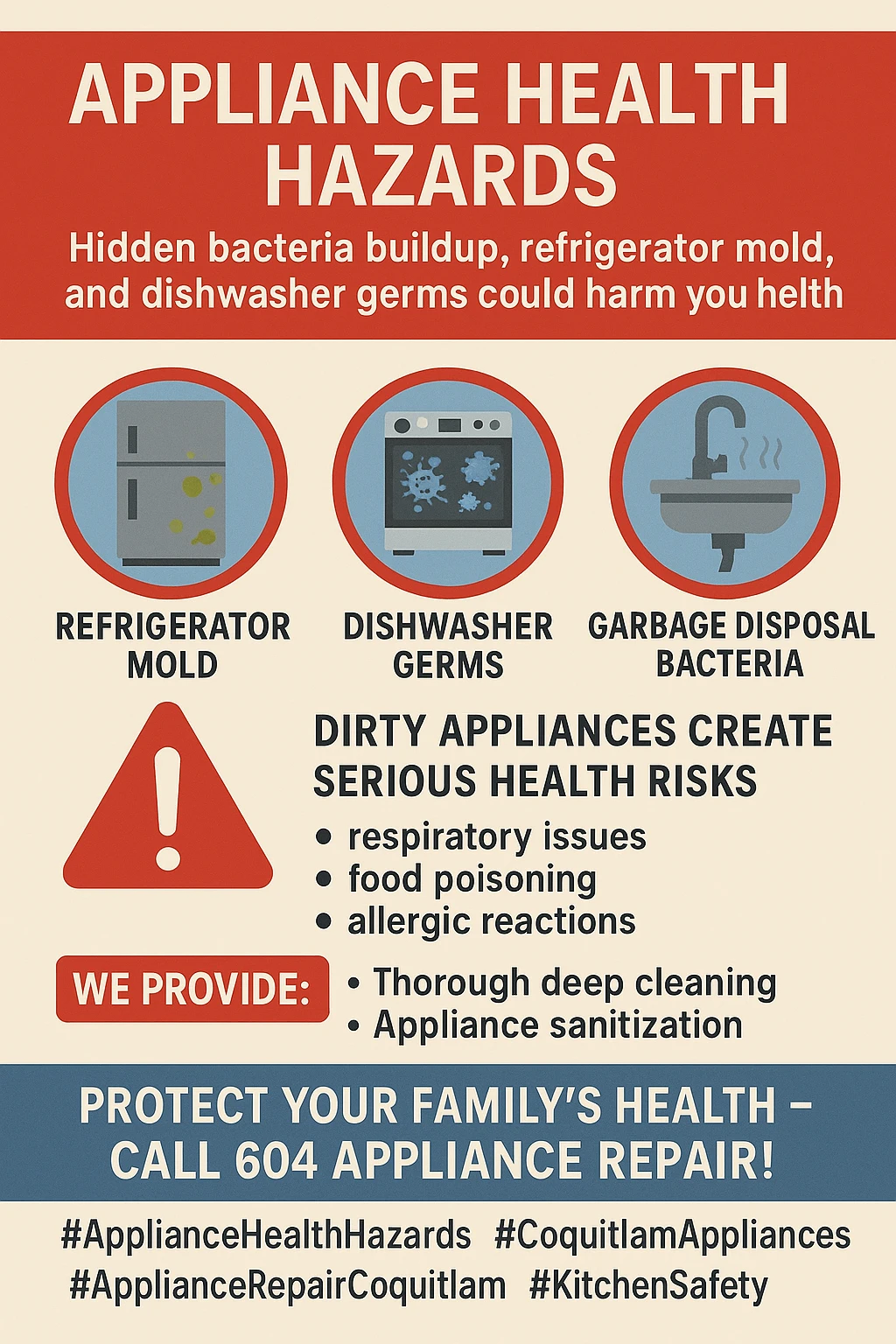
The Shocking Reality: Your Kitchen Appliances Are Germier Than Your Bathroom
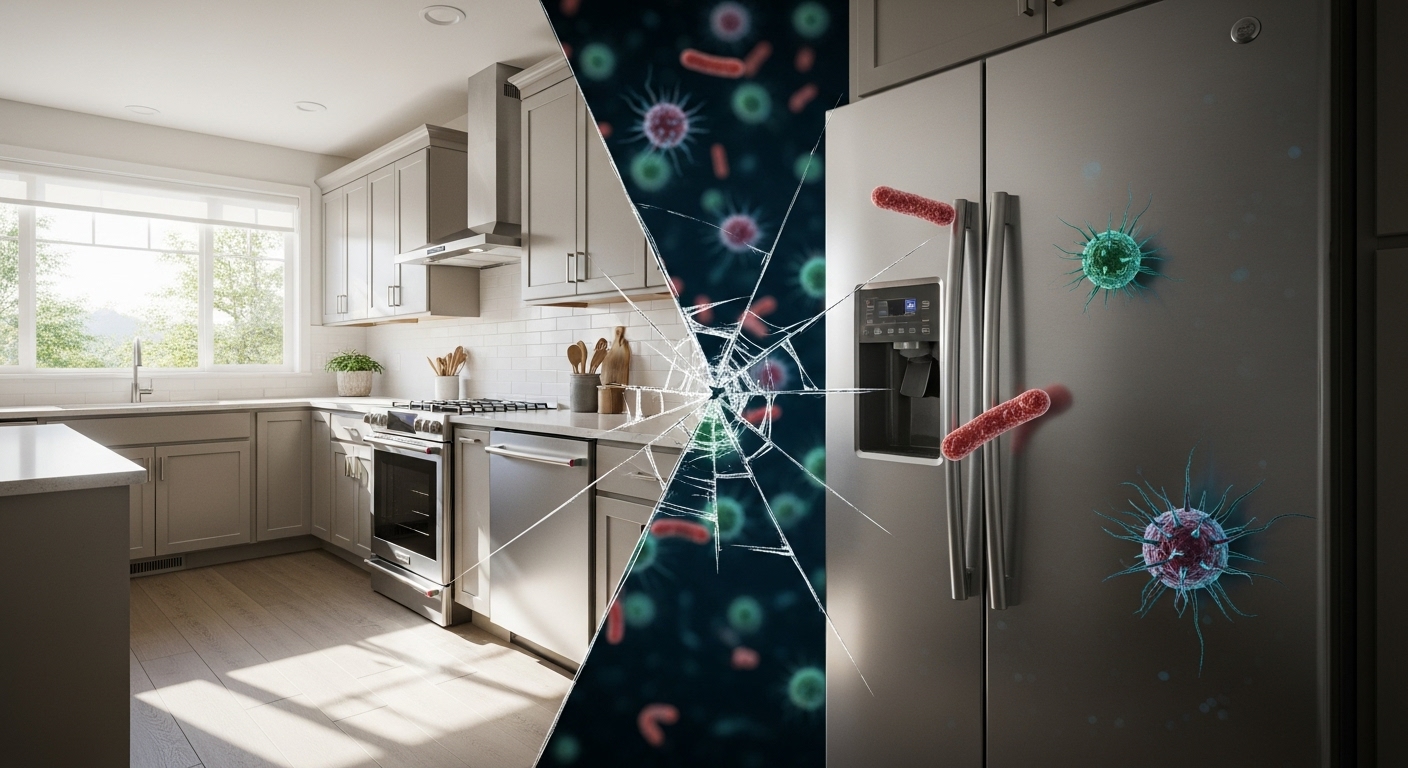
Let me start with a fact that’ll completely flip your understanding of home hygiene: three of the top five germ hot spots in your Coquitlam home are actually located in your kitchen, not your bathroom. While we obsess over sanitizing our toilets and scrubbing our shower tiles, we’re completely overlooking the bacterial paradise that’s thriving just steps away from where we prepare our family’s meals. It’s like worrying about a small campfire while your kitchen is experiencing a five-alarm bacterial blaze.
Here’s what really makes this crazy: warm and moist environments create the perfect breeding ground for germs, and our kitchens provide exactly these conditions 24/7. Your dishwasher creates steam and retains moisture, your refrigerator cycles between temperatures creating condensation, and your garbage disposal sits in a constantly damp environment filled with organic matter. Meanwhile, your bathroom actually dries out between uses and gets regular attention with disinfectants. The irony is thick enough to cut with a knife – we’re sanitizing the wrong rooms in our homes.
For those of us living in Coquitlam’s climate, this problem gets amplified significantly. Our Pacific Northwest weather means we’re dealing with higher ambient humidity levels year-round, plus seasonal moisture spikes during our rainy months. This creates a perfect storm where appliances that might stay reasonably dry in Arizona or Alberta are constantly battling moisture infiltration. Front-loading appliances, which are super popular in our area’s condos and energy-conscious homes, are particularly vulnerable because they’re designed to seal tightly – which also means they trap moisture and create ideal bacterial breeding conditions.
The financial implications here go way beyond just the “ick factor” of knowing your kitchen is contaminated. We’re talking about real money flowing out of your wallet when family members get sick from foodborne illnesses originating from dirty appliances. Emergency room visits for severe food poisoning can cost thousands of dollars, not to mention lost work days and ongoing medical treatment. Meanwhile, the preventive solution – regular professional appliance cleaning and maintenance – costs a fraction of what you’ll spend dealing with the health consequences of neglecting these bacterial hotbeds.
What’s particularly frustrating is that most Coquitlam homeowners have no idea this is even happening. You think you’re doing everything right by keeping your counters clean and washing your dishes, but meanwhile, your appliances are quietly undermining all your efforts. It’s like trying to fill a bucket with a massive hole in the bottom – you can pour in all the cleaning effort you want, but you’re fighting a losing battle until you address the real source of contamination.
Refrigerator Health Hazards: What’s Really Growing Inside Your Coquitlam Fridge
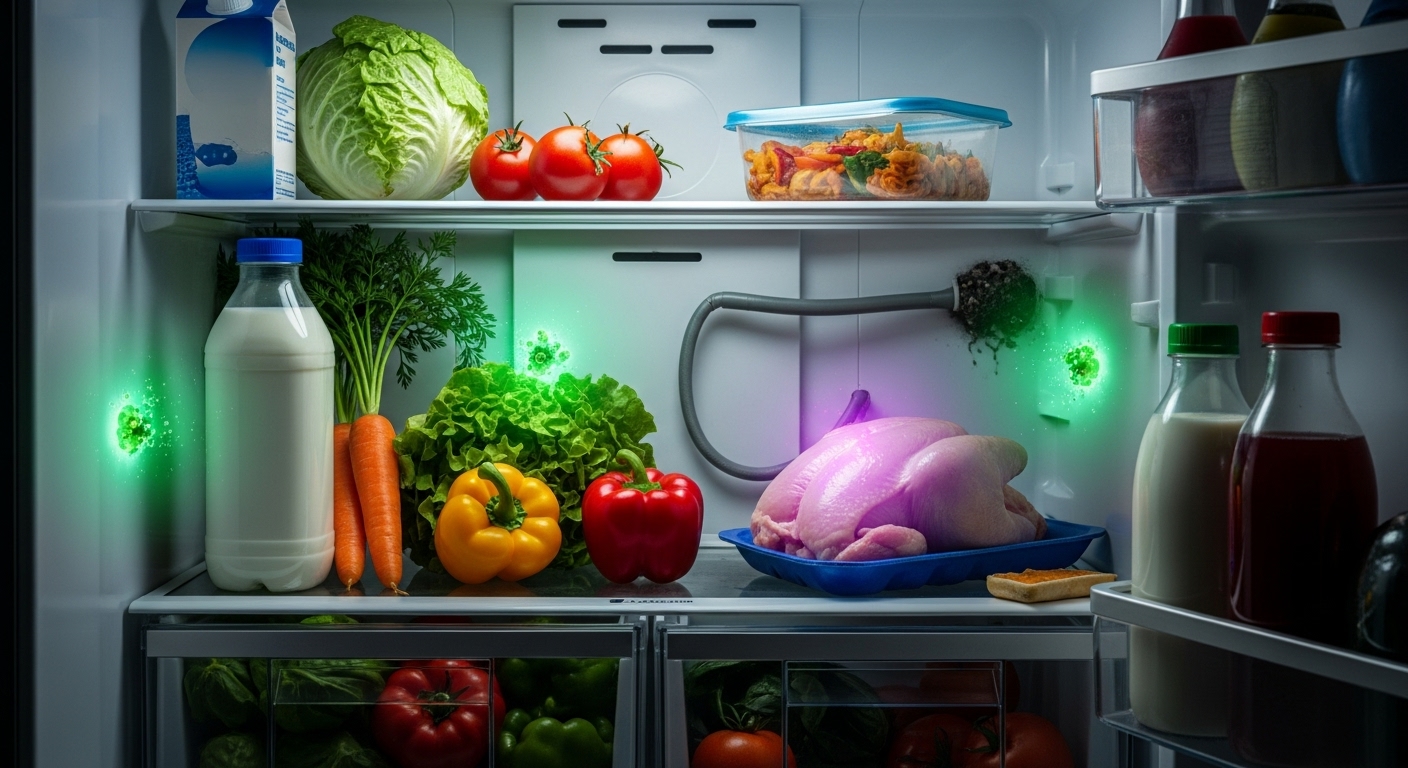
Now that we’ve established your kitchen appliances are bacterial danger zones, let’s dive into the scariest culprit of all – your refrigerator. Most people think of their fridge as a safe haven where cold temperatures keep bad things from growing, but that’s only true if everything’s working perfectly. The harsh reality is that very serious foodborne pathogenic bacteria can flourish in a warm refrigerator, including Listeria, E. coli, Salmonella, and Campylobacter. These aren’t just names on a scary bacteria list – they’re legitimate threats that send thousands of people to hospitals every year.
The critical temperature threshold that separates safety from danger is 40°F, according to the United States Department of Agriculture. This isn’t a suggestion or a rough guideline – it’s a hard line in the sand. When your refrigerator temperature rises above this critical point, your food storage areas become what experts describe as a “veritable petri dish” where dangerous microorganisms multiply rapidly. Think about that for a second: your refrigerator, the appliance you trust to keep your family’s food safe, can literally transform into a bacterial cultivation system when temperatures get too warm.
But temperature isn’t the only concern lurking in your fridge. Water damage from leaking supply lines can lead to black mold development, specifically Stachybotrys chartarum, which triggers severe allergic reactions and respiratory issues. This is particularly problematic in Coquitlam homes where our humid climate creates additional moisture challenges. I’ve seen cases where homeowners developed chronic respiratory problems that doctors couldn’t explain, only to discover later that black mold in their refrigerator’s water system was the culprit all along.
Cross-contamination inside your refrigerator creates another layer of risk that most people completely overlook. When juices from raw meat drip onto fresh produce, you’re creating a direct pathway for bacteria to spread throughout your entire food supply. This happens more often than you’d think, especially in busy family households where groceries get shoved into available spaces without much thought about proper storage hierarchy. Raw chicken stored above your salad greens essentially turns your healthy vegetables into potential weapons of gastrointestinal destruction.
Here’s something that’ll really gross you out: the dust accumulating on your refrigerator’s condenser coils isn’t just an efficiency problem – it’s also a breeding ground for dust mites. The stomach-turning reason dust mites cause people with allergies and asthma to have powerful reactions is that their feces become airborne and get inhaled into your lungs. So not only are you dealing with foodborne bacteria inside your fridge, but you’re also potentially breathing in microscopic pest waste every time you walk past your refrigerator.
Dishwasher Contamination: Why Your “Clean” Dishes Aren’t Actually Clean
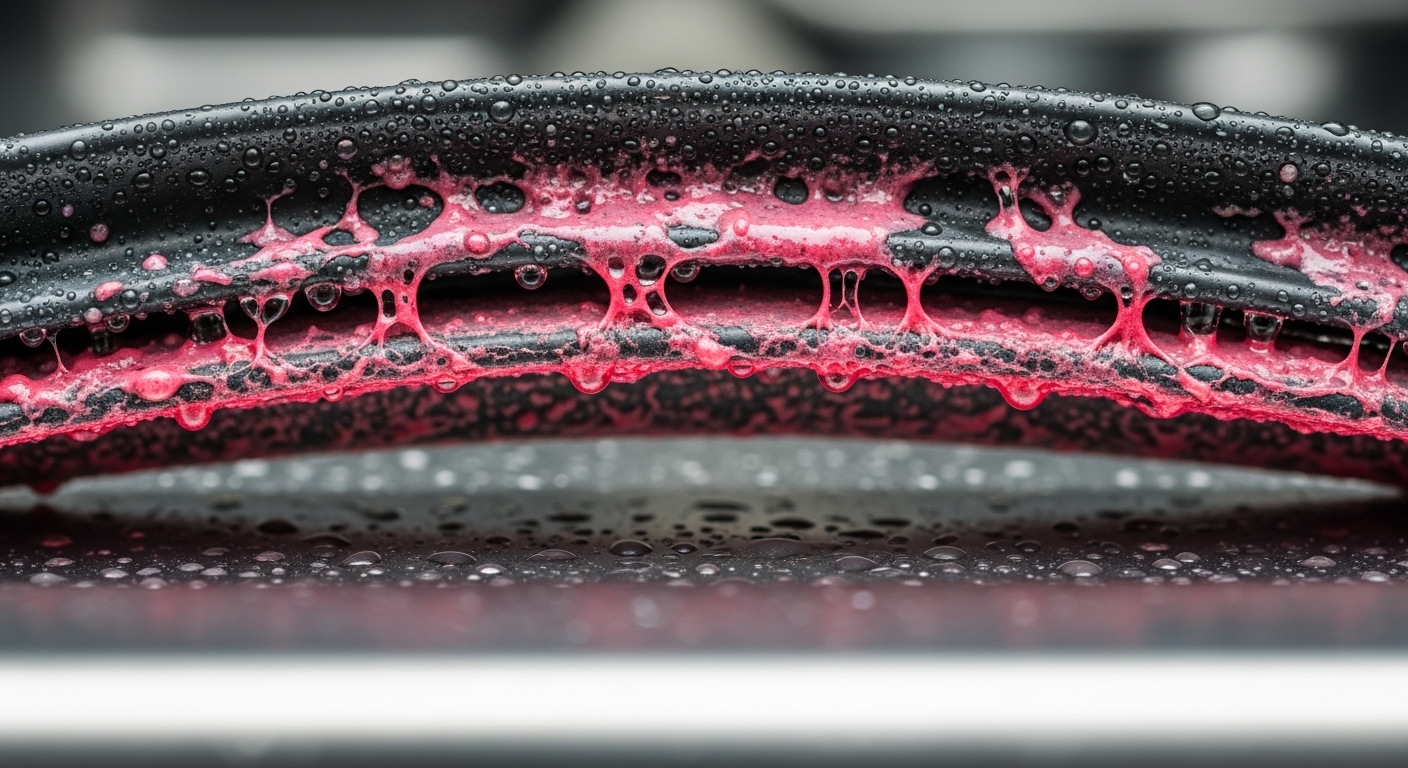
If refrigerator contamination shocked you, wait until you hear about what’s happening inside your dishwasher – the appliance specifically designed to sanit
